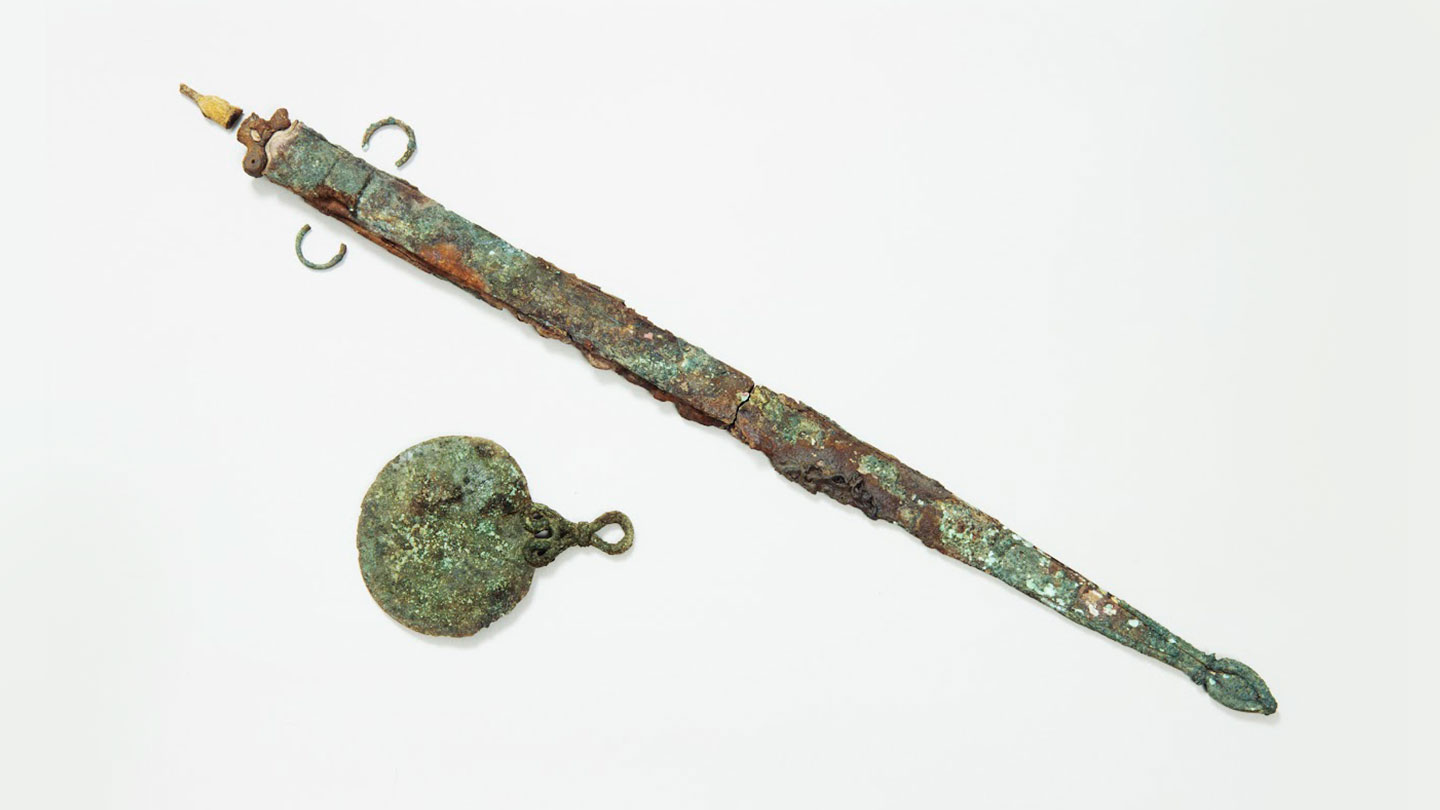
A roughly 2,000-year-old woman with a potentially violent streak has emerged from skeletal rubble found on an island off southwestern England’s coast.
A jumble of tooth and bone fragments in a Late Iron Age grave belonged to a young woman who was interred with items that include a sword, shield and bronze mirror, researchers report in the December Journal of Archaeological Science: Reports. The team used a sex-linked protein extracted from tooth enamel to classify the remains as female.
The island grave dates to roughly 100 B.C. to 50 B.C., based on radiocarbon dating of a partial bone and the types of metal objects found in the burial. Given tooth wear, the woman died between the ages of 20 and 25.
Since the burial’s accidental discovery in 1999 by a farmer plowing a field on England’s Bryher Island, researchers have wondered whether the stone-lined grave contained a man or woman. No other Western European Iron Age grave includes a sword, typically found in male burials from that region, and a mirror, often associated with female burials.

Human skeletal biologist Simon Mays of Historic England, a public organization that protects and studies historical places, in Portsmouth and colleagues speculate that the woman may have fought in raids and helped to fend off enemy attacks. Violence between communities may often have occurred in Iron Age Europe (SN: 10/6/20). And growing evidence suggests that ancient women, not just men, could be warriors too (SN: 9/13/17).
One possible use of the mirror was to flash beams of reflected sunlight as a way of communicating with people on nearby islands and with seacraft, the researchers speculate. If so, and given the sword’s presence, it’s possible the Bryher woman helped to plan raids and defensive actions.
Still, the remains bear no signs of violent conflict. So it’s also possible that mourners placed the sword and mirror in the grave as tokens of allegiance to the woman’s kin group or as heirlooms, the researchers say.
Source link